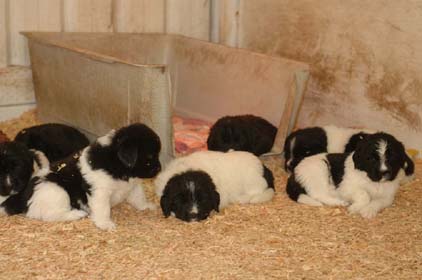
Chapter Six
Four Weeks Old
Suddenly, seemingly overnight, the puppies are too big for their britches. Or, more accurately, too big for the whelping box. It’s time for the Big Move.

Invariably, by day 28 – sometimes a day or three sooner – every litter is ready for more room. The signs are unmistakable. But the never-miss indicator is always the same. A puppy sets up an unholy racket. He has boosted himself up and out of the whelping box and has gone exploring down the hall, and now he can’t find his way back to his littermates. Ellis and Judi scoop him up, give him a cuddle, and smile at each other. Time to move the kids outside.
Awaiting them is a spacious kennel, designed just for puppies. People ask, “But aren’t they freaked out, moving to a new place?” Hah. They accept their expanded surroundings with aplomb and with curiosity, and they are clearly delighted to have the extra space. Their mom accompanies them to the new venue, too. What’s not to like?
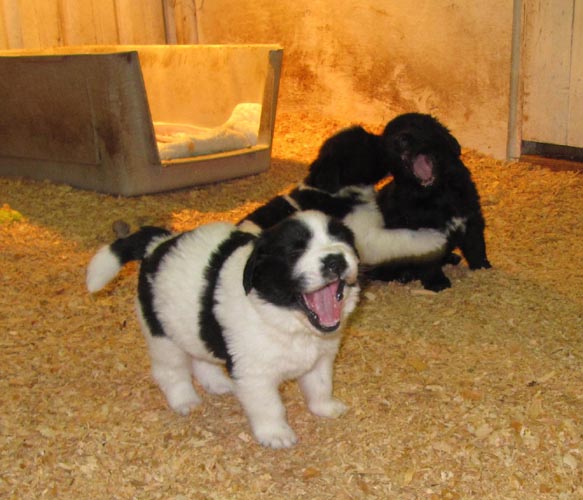
At first, the pups seem dwarfed by their spacious new quarters. But they exhibit confidence and joy, confirming that they were definitely ready for the move.
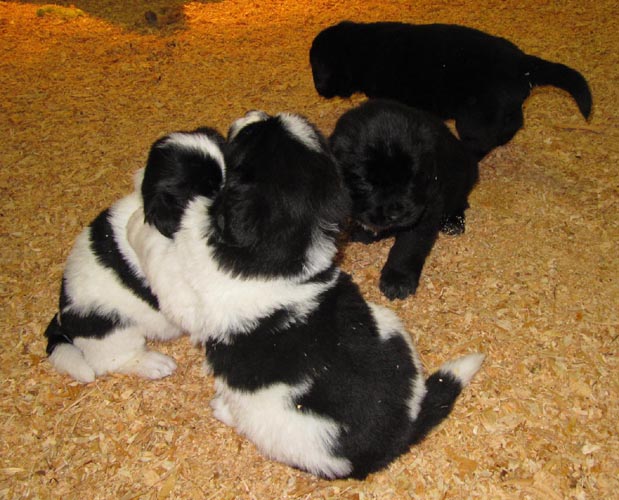
Life continues as before, only more so. This means endless games. Mock attacks are more skillful, and definitely more noisy. Those are real growls you hear!
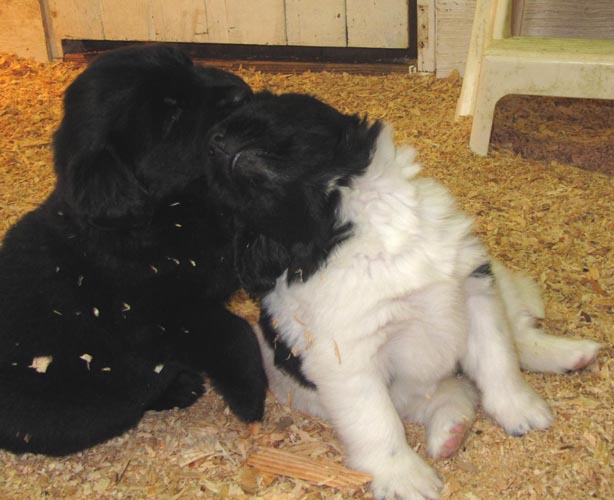
The puppies’ teeth may be tiny, but they’re effective. With the right timing and just enough oomph, a puppy can catch his prey unawares!
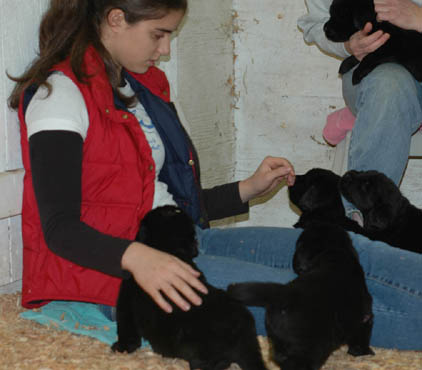
As the puppies grew, the whelping box became a crowded place, especially when visitors arrived. Now that the pups are outside, there’s plenty of room for people and puppies to stretch out. The Adlers have a standing list of regulars, friends who love to cuddle and play with puppies. Spending an hour or two in Newfie puppy-land is a welcome diversion from their otherwise busy lives. But the best part is, it’s so great for the puppies. Yes, Judi and Ellis spend endless hours with the puppies. But it’s the daily visits from so many others that help make Sweetbay dogs so outstandingly social and friendly.
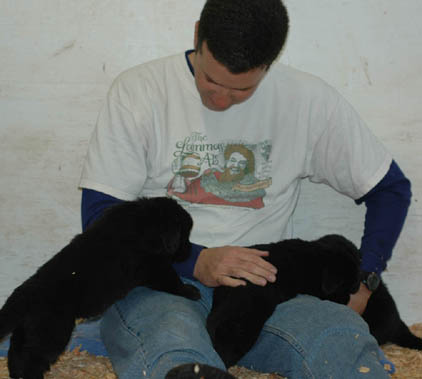
Human legs and laps make great obstacles, and the puppies practice their climbing skills, stretching and exercising those sturdy little bodies. They receive petting and praise for their efforts, making an indelible impression that will last throughout their lives.
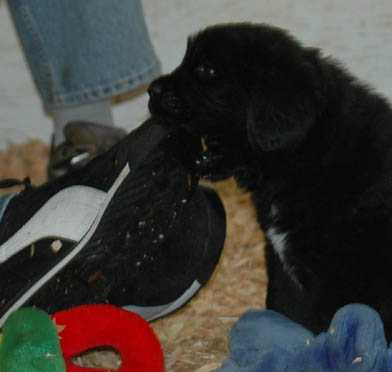
Four-week-old pups aren’t ready for corrections. Their mother knows this. She indulges them shamelessly, letting them chew on her ears, tug on her tail, and steal her toys. She knows they need to build confidence, and she gives them pretty much free rein. Judi and Ellis follow her cues. If she isn’t ready to lay down the law, they let things slide, too. For now, they turn a blind eye on Reebok-gnawing.
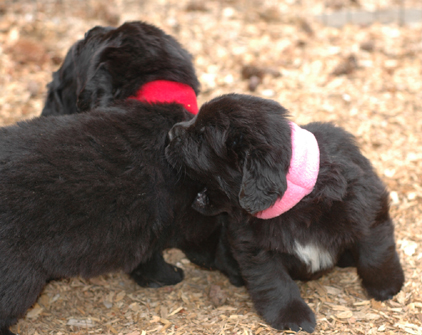
When the puppies move outside, the name chart moves, too. Those colored neckbands make it easy for visitors to tell one puppy from another, without having to hunt for nail polish markings.
That chart is crucial to Judi and Ellis’s sanity. It stems the constant stream of visitors’ queries: “Which one is this in my lap?” or “Who’s that carrying the ball?” It doesn’t take visitors long to learn to refer to the chart – and within moments, they know each puppy individually.
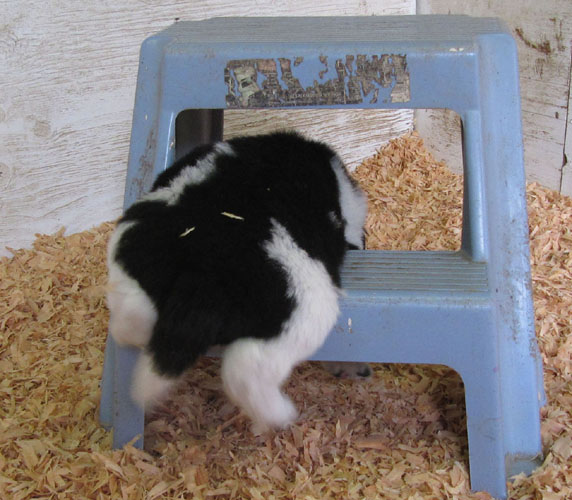
The expanded environment offers endless opportunities for entertainment and learning. Why go around a plastic step-stool when you can boost yourself up and crawl through it?
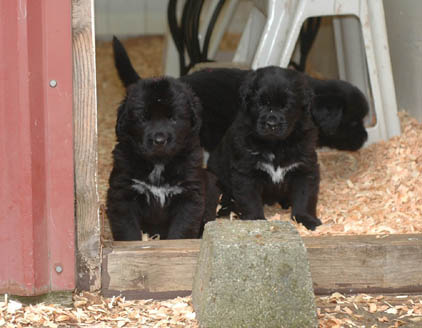
A large outdoor play area adjoins the puppies’ indoor kennel. The wooden sill that separates the two areas is only a few inches high. But until the pups are mentally and emotionally ready, it’s the barrier between safety and “the place where be dragons.” They enjoy viewing the bigger world; they just aren’t ready to take it on quite yet.
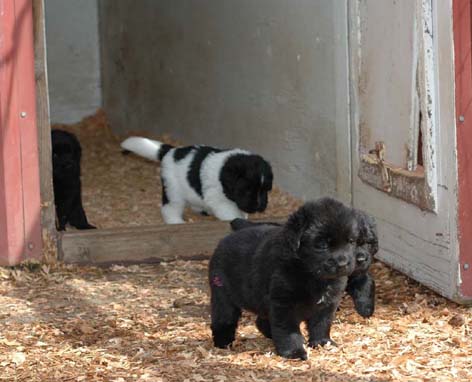
Some litters take a day or two to cross the threshold. Other litters are raring to go the instant Ellis and Judi move them outside. Open that door – and they’re off!
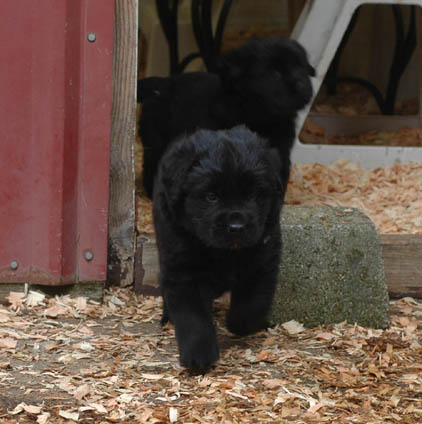
You can see the puppies’ confidence grow by the minute. Each foray makes them a little braver on the next expedition.
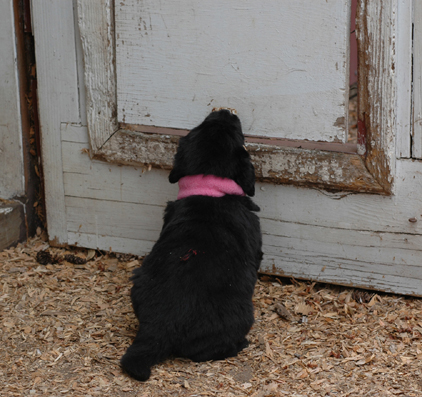
Once they learn how fascinating that larger world is, staying inside loses its appeal. They can’t wait for the door to open.
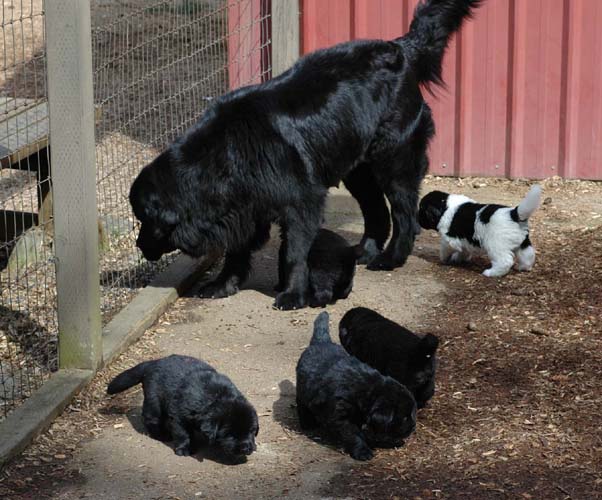
The pups’ mother spends time with them now and then, but she also has a life outside their kennel. Her arrivals and departures help prepare them for eventually being on their own.
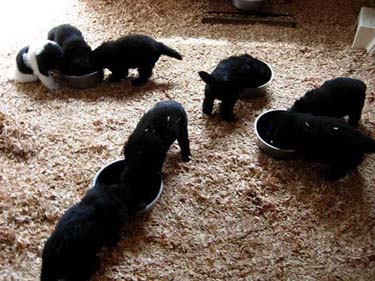
The pups are now on four square meals a day. Judi and Ellis dish out a thick, somewhat crunchy slurry made from kibble and warm water, with added goodies mixed in. Chow time!
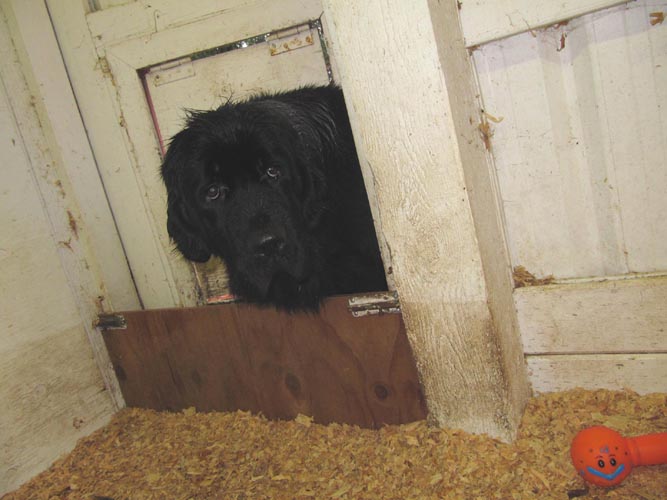
It’s tasty stuff, and the mother knows it. “Can’t I come in yet?” she asks plaintively. “They’re going to eat it all if you don’t let me in soon.”
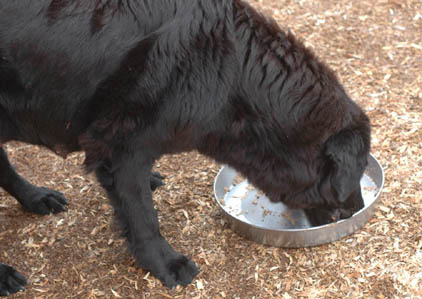
When there’s more than the pups can finish, she is always happy to clean the bowl.
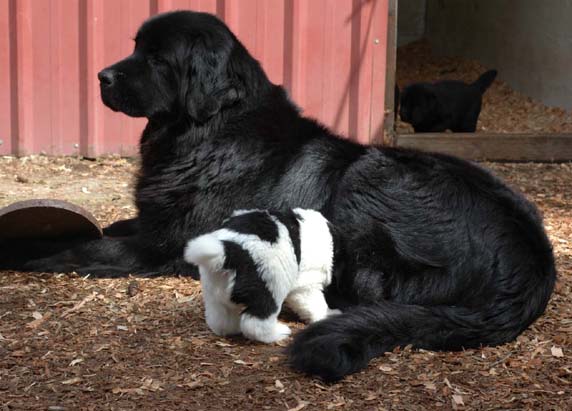
The pups are essentially weaned by this point, but many Sweetbay moms enjoy nursing for a few more weeks. That doesn’t mean the snack bar is open 24/7. This mom deliberately lies upright, like a sphinx, removing the spigots from reach. When she says no in this fashion, even a pushy little Landseer won’t score any milk.
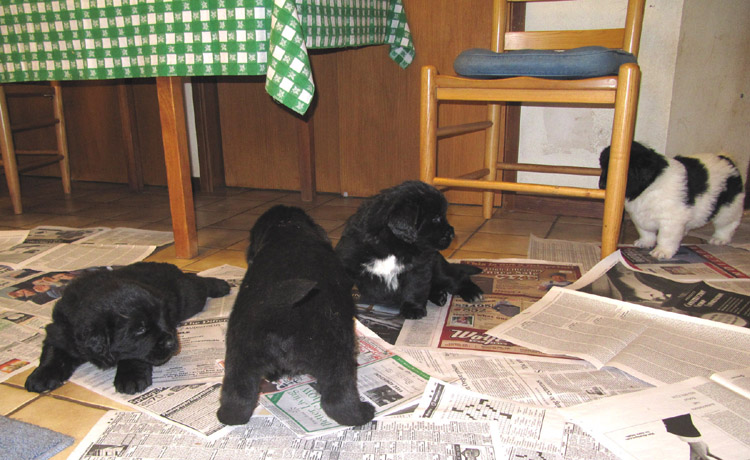
Pretty much every day, the pups are brought inside for house time. The kitchen is gated off, newspapers cover the floor, and the socializing continues.
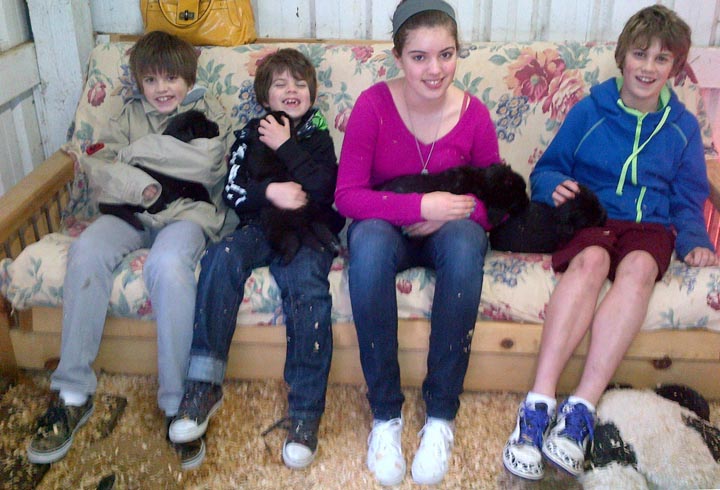
The Adlers regularly invite children to come play with the pups. Not that it’s hard to find volunteers.

Some of the Adlers’ adult visitors first started visiting as children. They continued coming through their teens and on into adulthood. Now they bring their own children to play with the pups.
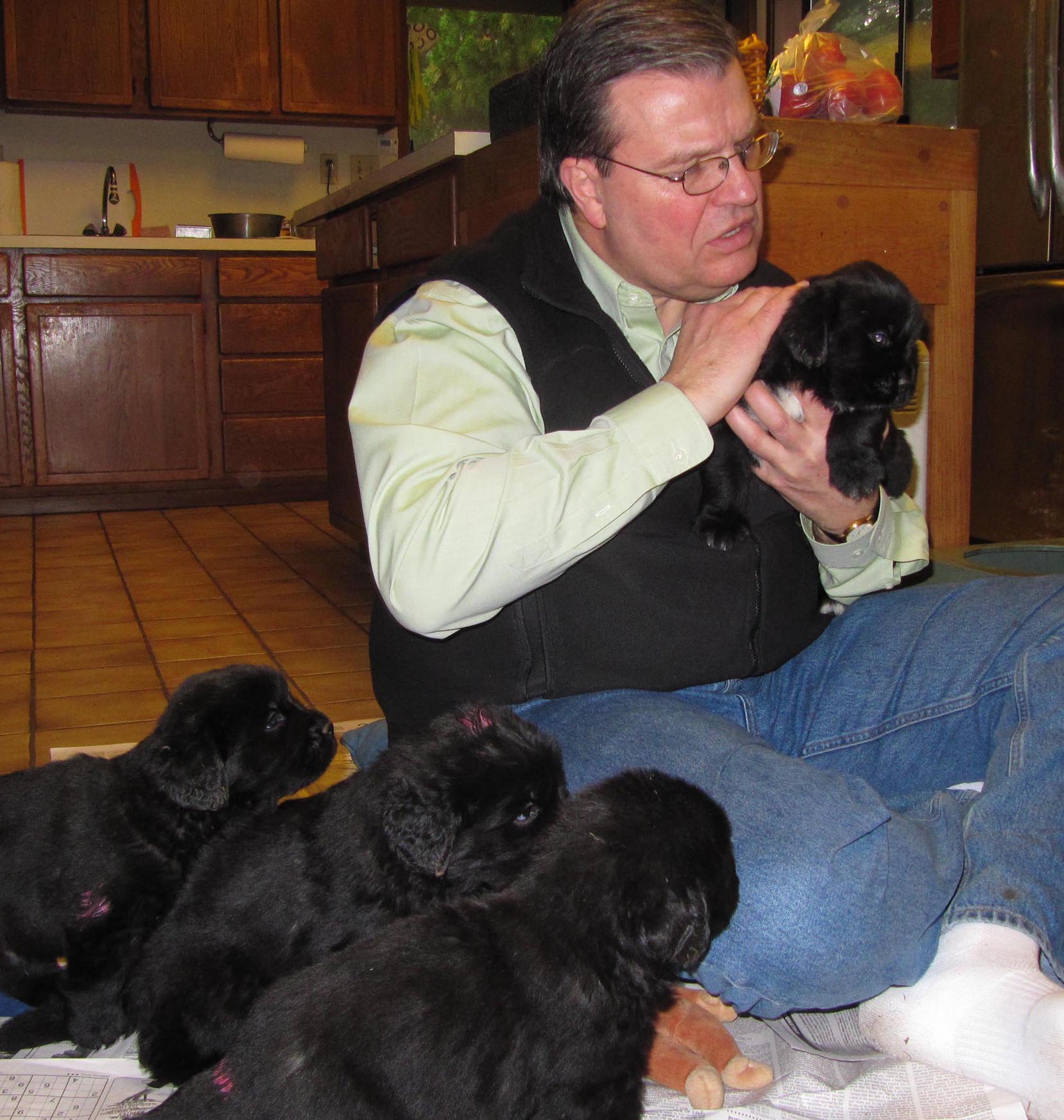
Socializing puppies is far from an arduous task, and visitors look forward to cuddling and playing with the pups. It’s hard to say who enjoys these sessions more, the puppies or the socializers.
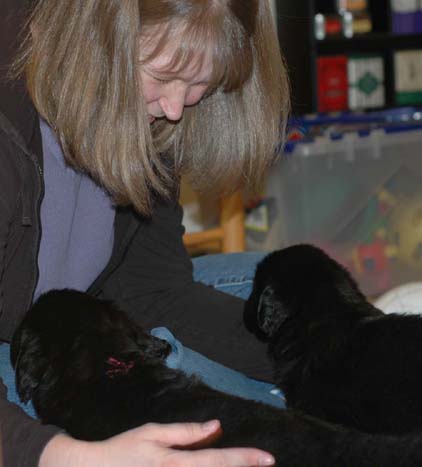
The Newfoundland’s exceptionally friendly nature is definitely genetic, but it’s encouraged and expanded through excellent socializing.
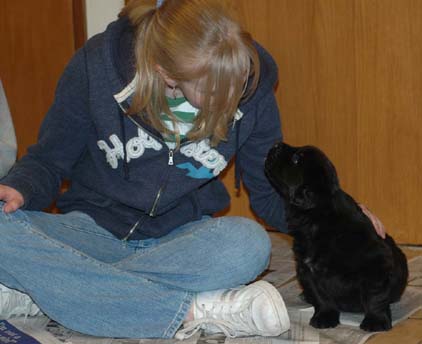
There are many qualities that set Sweetbay Newfoundlands apart from other dogs. Their social gregariousness, attentiveness, curiosity, and eagerness to learn are second to none. And they all start here, in puppyhood.
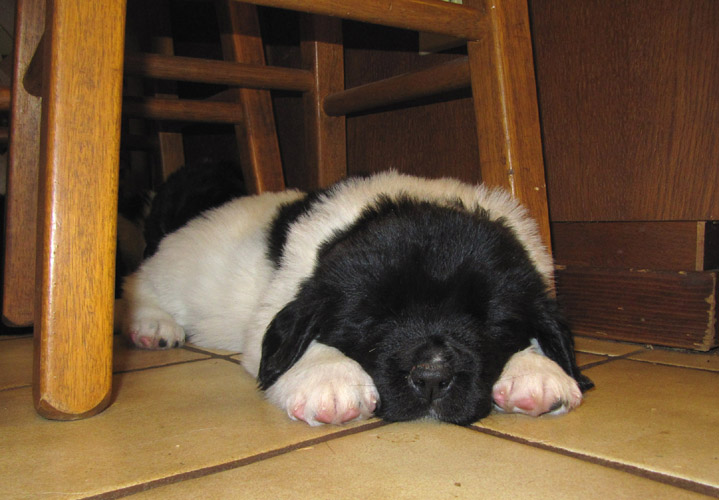
Entertaining visitors is tiring. Even the most social puppy will eventually slip into a deep, well-deserved nap.
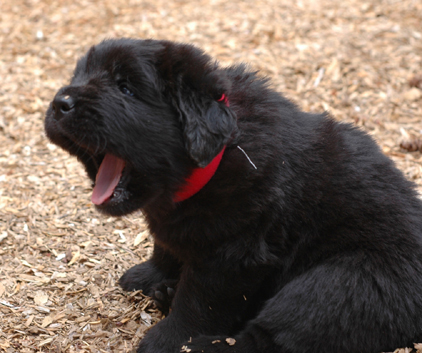
Four-week-old puppies have a lot to say. Their vocabulary grows daily, both in variety and in decibel level. When they bark, they bark!
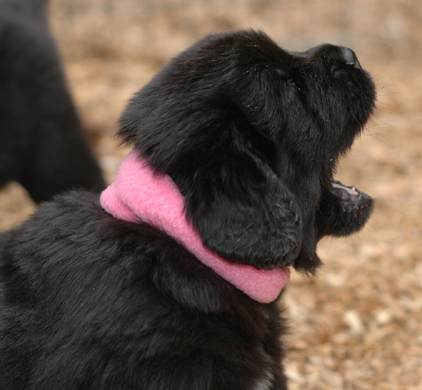
If one puppy makes a comment, another is sure to reply.
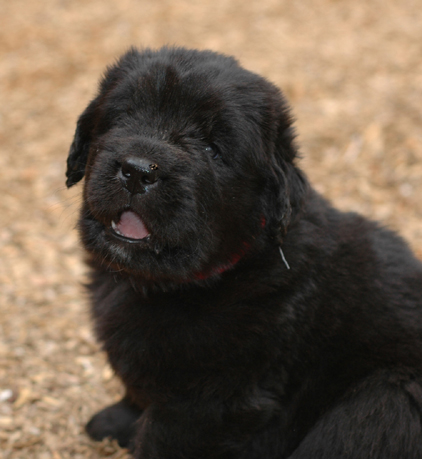
At this age, puppies rely on their mother, and they need their human caretakers. Sweetbay puppies are supremely athletic, but they still stumble and bumble at times, and their antics range from adorable to hilarious. Yet when you look closely, you can see glimmers of the independent, sure-footed, ready-for-new-owners puppy developing. It won’t be long before he’ll be in the arms of his adoptive family, and all set to blossom in his new home.